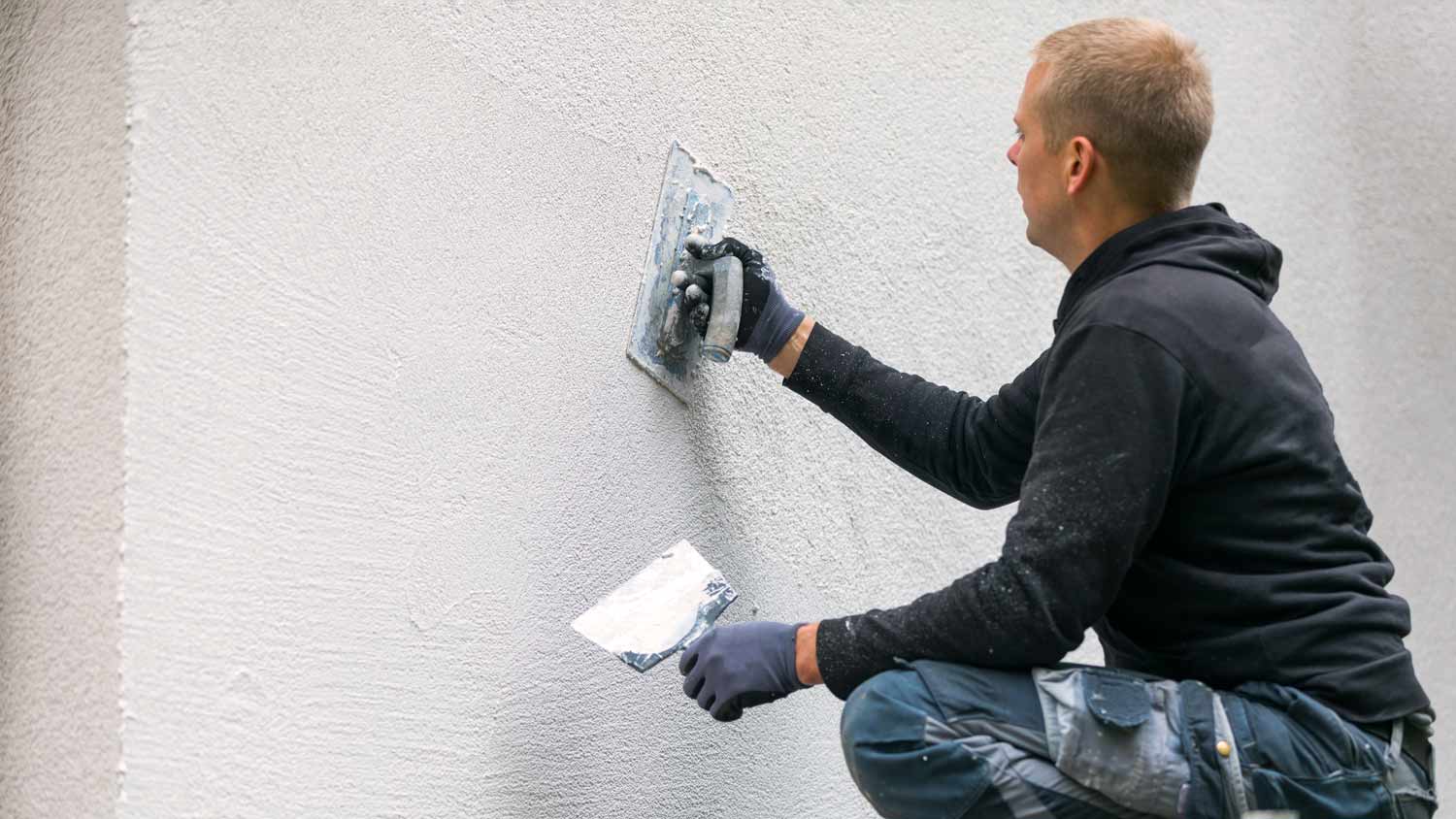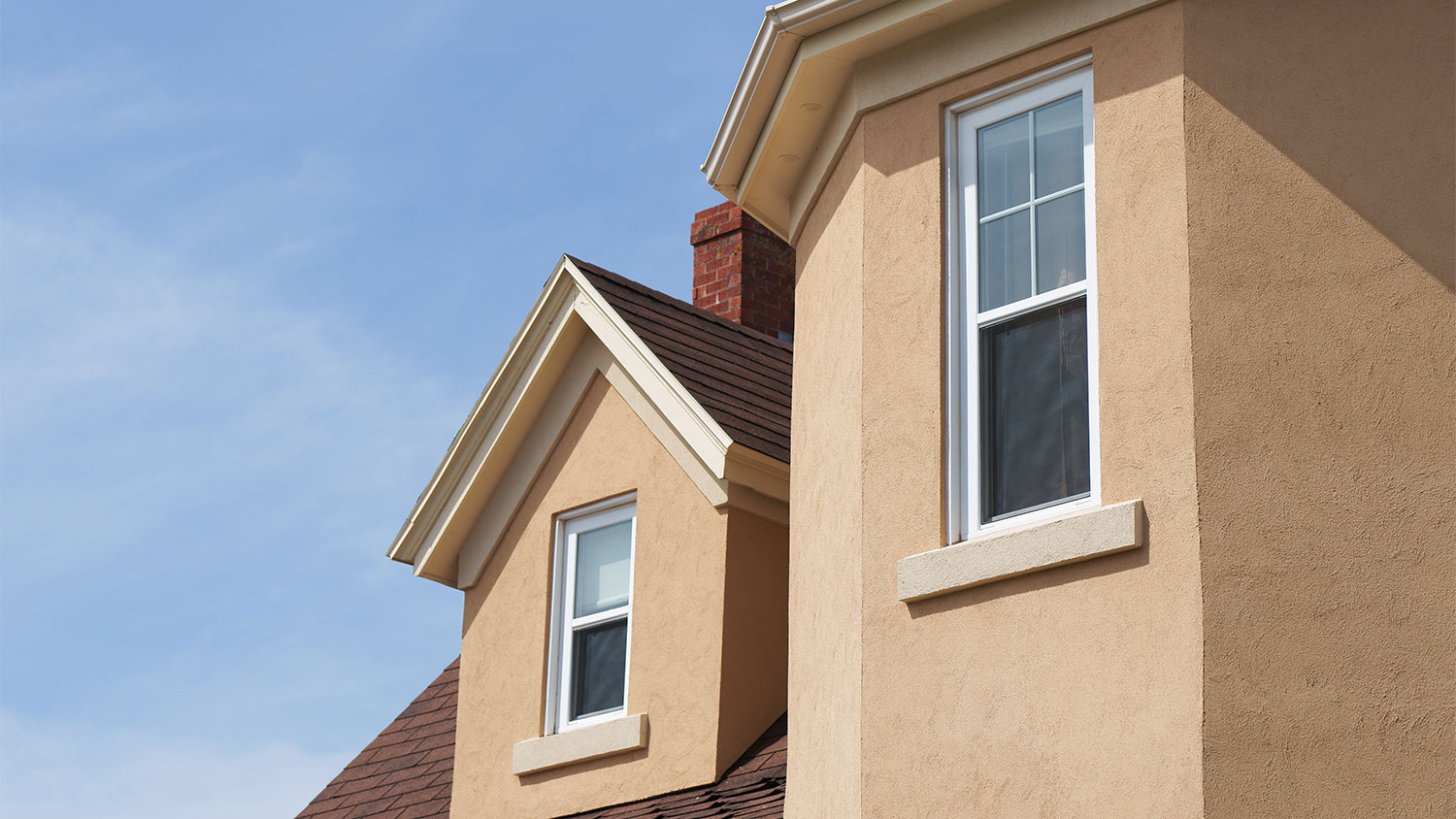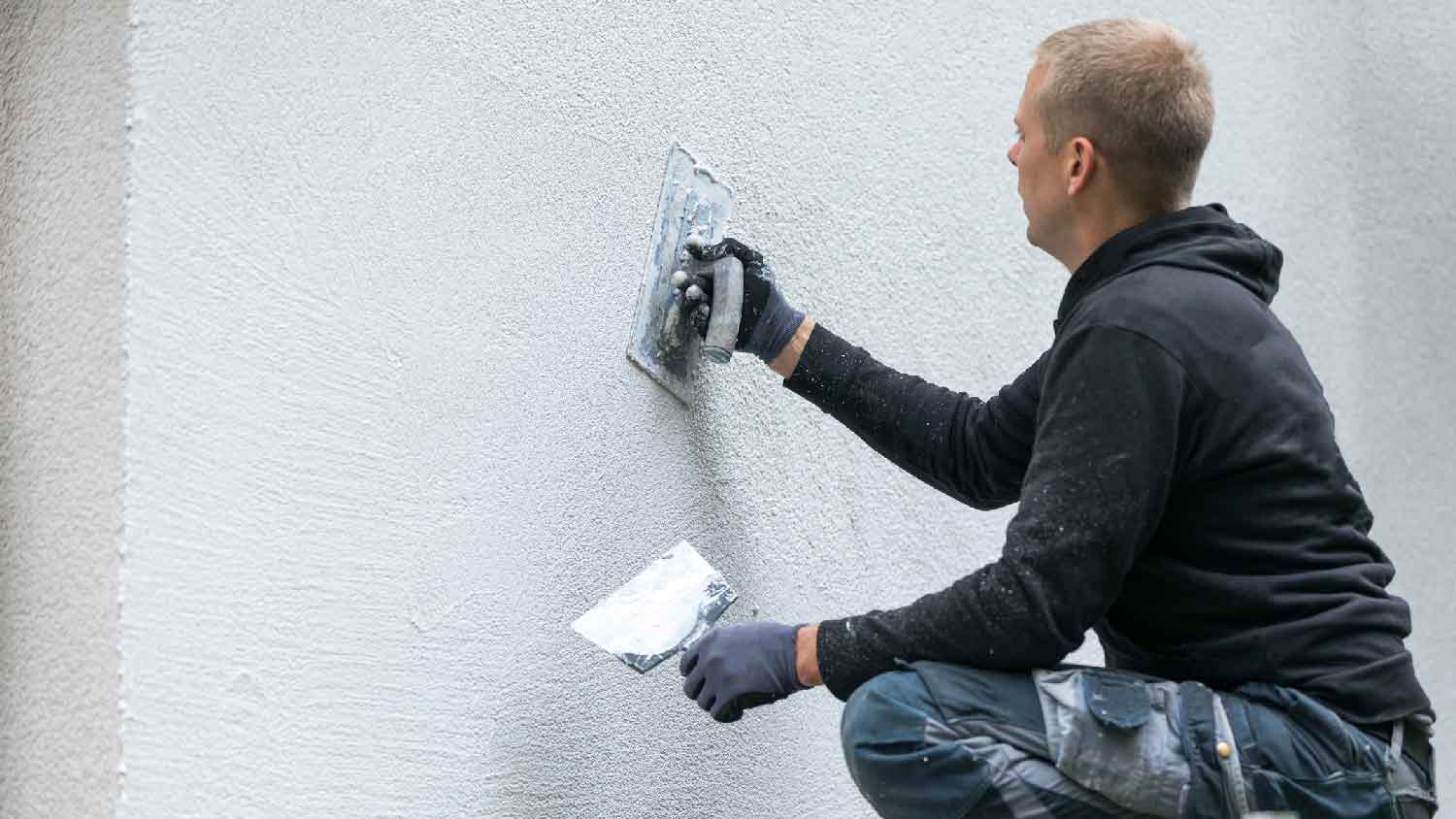
Get transparent stucco inspection cost info. Learn what impacts price, how to save, and what to expect before hiring a pro for your stucco inspection.
With proper upkeep, this popular siding should last for decades


Stucco is a type of siding typically made from Portland cement, sand, lime, and water.
On average, stucco siding lasts 50 years.
Stucco siding is best for dry climates such as Nevada, Arizona, and New Mexico.
Proper installation, annual inspections, and routine maintenance can help stucco last longer.
Choosing the right siding for your home largely comes down to how good it looks and how long it lasts. Stucco has long been a favorite for its durability, versatility, and aesthetic appeal. Whether you’re considering stucco for a new build or wondering about the existing stucco on your house, here’s one of the questions you likely need answered: How long does stucco last? In this article, we’ll walk you through the steps you can take to make your stucco look great for as long as possible—ideally, 50 years or more.
Stucco is a type of siding that’s made from a cement-like mixture that’s applied in layers (usually three). In addition to its aesthetic value, stucco siding is a favorite among homeowners for its durability, flexibility, and resistance to fire. There are two types of stucco siding: traditional and synthetic.
Traditional stucco is comprised of Portland cement, sand, lime, and water. While it’s strong and resistant to water and fire, traditional stucco is susceptible to changes in temperature and humidity. As the weather changes, traditional stucco expands and contracts, making it more likely to form cracks as time goes on.
Synthetic stucco, also known as Exterior Insulation Finishing Systems (EIFS), is the more expensive alternative to traditional stucco. Instead of cement, it’s made of acrylic resins and polymers. Synthetic stucco may be better at keeping you and your family warm in the winter, but its higher price tag and limits in customization may have you sticking with traditional stucco.
On average, stucco can last upwards of 50 years. If you’re lucky, you can stretch the lifespan of stucco to 80 years or more with proper maintenance and under favorable conditions. The factors influencing stucco’s longevity include quality of installation, maintenance, climate, and whether or not you use traditional or synthetic stucco.

Stucco should last for many decades; however, several factors impact how long your stucco actually lasts. These factors include:
Stucco is a challenging substance to work with, especially with no prior experience. The installation requires an extremely involved process that includes creating the mixture, preparing your home’s surface, and allowing the stucco time to dry and cure. Curing alone is a long, intricate process that can take anywhere from 48 hours to a week for each of the three layers.
Shoddy installation can leave you susceptible to issues like cracking and trapped moisture, eventually requiring you to shell out for stucco repair costs, which cost an average of $1,599. Worst case scenario, you may end up footing the bill for an expensive stucco removal.
Stucco is durable, but it’s not indestructible. It fares well in both hot and cold climates, and it holds up well against wind, but the same can’t be said for moisture.
Stucco is a porous material and, like a sponge, it absorbs humidity from rain, snow, and ice. When this happens, it can lead to minor cosmetic cracks, which is relatively normal for stucco. If moisture gets trapped beneath the surface, however, it can cause bigger problems like bulging, damage to your finish, or mold.
These problems are more common in very humid climates as well as frigid, wet climates with frequent freeze-thaw cycles.
Should you install stucco or EIFS? The type of stucco you choose also determines how long it’ll last. While both materials are strong, synthetic stucco has a slight upper hand in lasting longer. EIFS has a fiberglass layer that makes it more durable than its traditional alternative. It’s also resistant to cracking and crumbling from freeze-thaw cycles or shifting foundations
Instead of letting your stucco fall victim to conditions like shoddy installation, weather, and regular wear and tear, take the extra steps to help it last longer.
Proper application is the best way to ensure your stucco lasts as long as possible. Stuccoing a house is a huge project, one you should consider removing from your DIY to-do list. Not only does it take weeks to apply, but it requires the knowledge, technique, and tools of a professional. Hiring a local stucco contractor can be expensive. The cost of stucco siding often ranges between $2,193 and $9,061; however, the price tag may be worth the guarantee of a job that’s done correctly.
Annual stucco inspections may seem excessive, but they go a long way in protecting your home from damage and your bank account from costly repairs. The recommended schedule varies for each homeowner and depends on where you live. If you live in a drier climate, you can get away with an inspection once every three years. For those who live in humid climates or areas with frequent freeze-thaw cycles, an annual inspection can help catch potential issues before they get worse.
While you can conduct your own visual inspection and check for cracks, discoloration, and gaps, a professional inspection will offer a more in-depth look into issues happening beyond the surface.
If you take the few steps needed for stucco maintenance, it can last well over 50 years. The following tips will help keep your stucco looking brand new.
Cleaning: Use water and a bristle brush for simple stains or dish soap or bleach for tough stains or mold.
Pressure washing: Deep clean your stucco siding with a pressure washer—between 1,500 psi and 2,800 psi—once or twice a year.
Repairing: Patch small stucco cracks or chips with caulk as they appear.
Resealing: Seal your stucco once every five to 10 years.
Repainting: Repaint your stucco every decade. Generally, the pigment in the finish is long-lasting, and you won’t need frequent repaints. The color can fade in areas of extreme sunlight, and painting can help it last longer and look as good as new.
You don’t have to worry about your stucco year-round, but committing yourself to twice-a-year upkeep will go a long way in making it last as long as possible.
From average costs to expert advice, get all the answers you need to get your job done.

Get transparent stucco inspection cost info. Learn what impacts price, how to save, and what to expect before hiring a pro for your stucco inspection.

Discover the cost to stucco a house in 2025, including average prices, key factors, and tips to help you budget and plan your stucco project with confidence.

Discover the average stucco repair cost, key price factors, and ways to save. Get expert tips to budget your stucco repair project with confidence.

If your home's stucco is cracking or deteriorating, it's important to fix the issue right away to avoid structural damage or mold. Here's who to call for stucco repair.

Traditional stucco and synthetic stucco are two excellent options for your home. Both materials can last 50 years or more, and can provide excellent protection for your home against the elements.

Tired of that old, moldy stucco? Learn how to remove stucco siding the quick and easy way to save a few thousand dollars on siding removal costs.